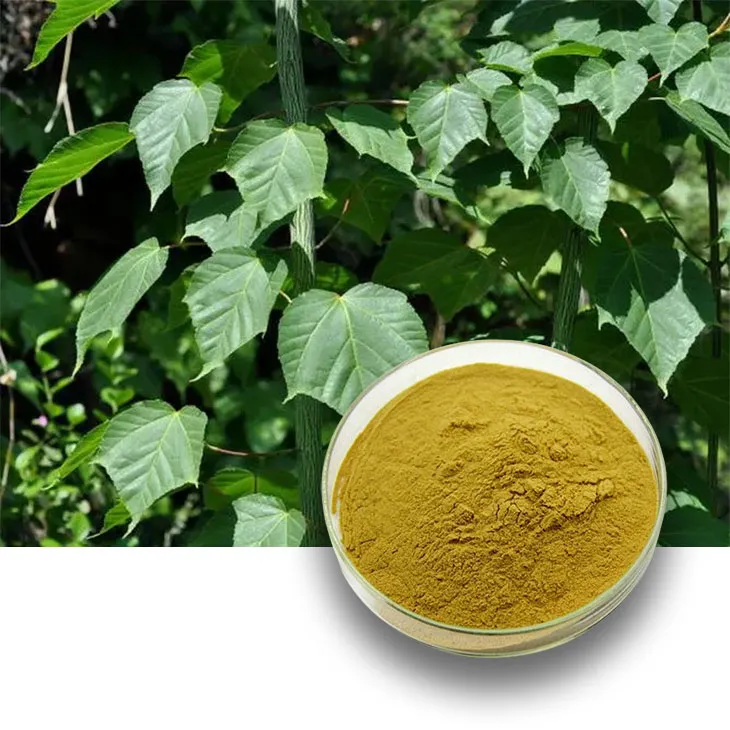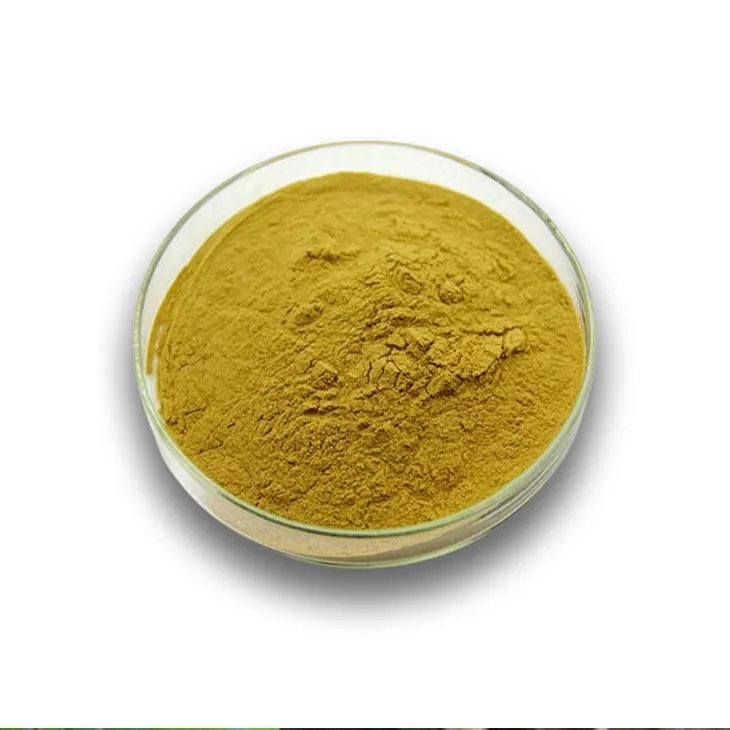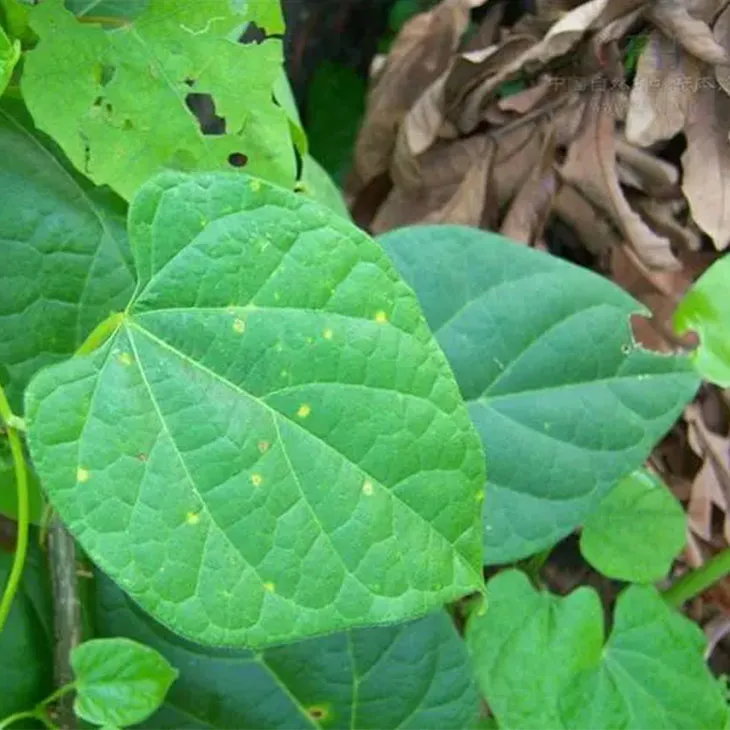- 0086-571-85302990
- sales@greenskybio.com
Extraction process of Tinospora cordifolia extract.
2024-11-26

1. Introduction
Tinospora cordifolia, also known as Heart - leaved Tinospora, is a plant with various potential medicinal properties. The extraction of its extract is of great significance for exploring its pharmacological effects and applications. This article will focus on the extraction process of Tinospora cordifolia extract in detail.

2. Collection of Tinospora cordifolia
The collection of Tinospora cordifolia plants is the very first step in the extraction process. It is extremely important for botanists or collectors to accurately identify the correct species. Incorrect identification may lead to the extraction of substances from the wrong plant, which can have serious consequences for subsequent research and applications.

3. Preparation of Plant Parts for Extraction
3.1 Drying of Plant Material
Drying the plant material can be a viable option before extraction. By reducing the moisture content, it can have several benefits. Firstly, it helps to prevent the growth of microorganisms during the extraction process. Secondly, it can make the extraction process more efficient as the solvent can better interact with the dry plant matter. However, it should be noted that different drying methods may have different impacts on the quality of the plant material and the subsequent extraction results. For example, air - drying is a natural and simple method, but it may take a relatively long time. On the other hand, oven - drying can be faster but needs to be carefully controlled to avoid over - drying and damaging the active compounds in the plant.
3.2 Size Reduction
Another aspect of preparing the plant parts is size reduction. Grinding or chopping the plant material into smaller pieces can increase the surface area available for extraction. This allows the solvent to have more contact with the plant cells, thus enhancing the extraction efficiency. However, care should be taken not to over - process the plant material, as this may also lead to the destruction of some active compounds.
4. Extraction Methods
4.1 Maceration
Maceration is a traditional and effective extraction method. In this process, the dried or fresh plant material is placed in a container with a suitable solvent. The container is then left for a long time, with occasional stirring. The solvent used can vary depending on the nature of the compounds to be extracted. For example, ethanol is a commonly used solvent as it can dissolve a wide range of organic compounds. During maceration, the solvent gradually penetrates the plant cells. As time passes, the desired compounds are extracted into the solvent. This method is relatively simple and does not require complex equipment. However, it is time - consuming, and the extraction efficiency may not be as high as some modern extraction methods.
4.2 Ultrasonic - Assisted Extraction
Ultrasonic - assisted extraction is a more advanced technique. During the extraction process, ultrasonic waves are applied. These ultrasonic waves can cause cavitation in the solvent. Cavitation refers to the formation, growth, and implosion of small bubbles in the liquid. When these bubbles implode, they generate high - energy shock waves and micro - jets. These physical phenomena can enhance the mass transfer rate between the plant cells and the solvent. In addition, the shock waves can effectively break the cell walls of the plant, allowing the solvent to access the intracellular compounds more easily. As a result, this method can lead to a higher yield of the Tinospora cordifolia extract compared to traditional maceration. Moreover, it can also shorten the extraction time. However, this method requires specialized ultrasonic equipment, which may increase the cost of extraction.
4.3 Soxhlet Extraction
Soxhlet extraction is another well - known method. In this method, the plant material is placed in a Soxhlet extractor. The solvent is continuously recycled through the plant material. The solvent vaporizes in the heating flask, rises through the condenser, and then drips back onto the plant material in the extraction chamber. This continuous circulation of the solvent ensures that the plant material is constantly exposed to fresh solvent, which can effectively extract the desired compounds. Soxhlet extraction is very efficient for extracting compounds with relatively low solubility in the solvent. However, it also has some drawbacks. For example, it may require a relatively large amount of solvent, and the extraction process may be relatively long. Also, the high temperature involved in the process may cause some degradation of the active compounds in the plant.
5. Filtration
After the extraction process, whether it is maceration, ultrasonic - assisted extraction or Soxhlet extraction, filtration is a necessary step. Filtration is carried out to separate the extract from the plant debris. There are various filtration methods available. For example, simple gravity filtration can be used, where the extract - solvent mixture is poured through a filter paper in a funnel. This can effectively remove large particles of plant debris. For more fine - tuned filtration, vacuum filtration can be employed. In vacuum filtration, a vacuum pump is used to create a pressure difference, which speeds up the filtration process and can remove even smaller particles. The quality of the filtration is crucial as any remaining plant debris in the extract may affect the purity and subsequent applications of the Tinospora cordifolia extract.
6. Evaporation
Following filtration, evaporation is carried out to remove the solvent and obtain the concentrated Tinospora cordifolia extract. There are different evaporation methods. One common method is rotary evaporation. In rotary evaporation, the extract - solvent mixture is placed in a round - bottomed flask, which is then rotated in a water bath under reduced pressure. The reduced pressure helps to lower the boiling point of the solvent, allowing it to evaporate more easily. As the flask rotates, the surface area of the liquid in contact with the air is increased, which also accelerates the evaporation process. Another method is simple heat - induced evaporation, where the extract - solvent mixture is heated gently to drive off the solvent. However, care must be taken during evaporation to avoid over - heating, which may cause the degradation of the active compounds in the extract.
7. Conclusion
The extraction process of Tinospora cordifolia extract involves multiple steps, from the collection of the plant to the final concentration of the extract. Each step plays a crucial role in obtaining a high - quality extract with maximum yield of the desired compounds. Different extraction methods have their own advantages and disadvantages, and the choice of method depends on various factors such as the nature of the compounds to be extracted, cost, and time constraints. Future research may focus on further optimizing these extraction processes to fully utilize the potential of Tinospora cordifolia in the field of medicine and other applications.
FAQ:
What is the first step in the extraction process of Tinospora cordifolia extract?
The first step is the collection of the Tinospora cordifolia plants. Botanists or collectors need to accurately identify the correct species.
Why is drying the plant material before extraction an option?
Drying the plant material before extraction is an option because it can reduce the moisture content.
What is maceration in the context of Tinospora cordifolia extract extraction?
Maceration is a traditional yet effective way in the extraction. The dried or fresh plant material is placed in a container with a solvent and left for a long time with occasional stirring. This helps the solvent to penetrate the plant cells and extract the desired compounds.
How does ultrasonic - assisted extraction work for Tinospora cordifolia extract?
During the extraction process of Tinospora cordifolia extract, ultrasonic - assisted extraction applies ultrasonic waves. These waves can enhance the mass transfer rate and break the cell walls more effectively, leading to a higher yield of the extract.
What are the final steps after the extraction of Tinospora cordifolia?
After extraction, filtration is carried out to separate the extract from the plant debris, followed by evaporation to remove the solvent and get the concentrated Tinospora cordifolia extract.
Related literature
- Studies on the Bioactive Compounds of Tinospora cordifolia Extract"
- "Optimization of Extraction Methods for Tinospora cordifolia"
- "The Pharmacological Potential of Tinospora cordifolia Extract: An Overview"
- ▶ Hesperidin
- ▶ citrus bioflavonoids
- ▶ plant extract
- ▶ lycopene
- ▶ Diosmin
- ▶ Grape seed extract
- ▶ Sea buckthorn Juice Powder
- ▶ Beetroot powder
- ▶ Hops Extract
- ▶ Artichoke Extract
- ▶ Reishi mushroom extract
- ▶ Astaxanthin
- ▶ Green Tea Extract
- ▶ Curcumin Extract
- ▶ Horse Chestnut Extract
- ▶ Other Problems
- ▶ Boswellia Serrata Extract
- ▶ Resveratrol Extract
- ▶ Marigold Extract
- ▶ Grape Leaf Extract
- ▶ blog3
- ▶ Aminolevulinic acid
- ▶ Cranberry Extract
- ▶ Red Yeast Rice
- ▶ Red Wine Extract
-
White Willow Bark Extract
2024-11-26
-
Bayberry Extract
2024-11-26
-
Beta Carotene
2024-11-26
-
Medicinal Marshmallow Extract
2024-11-26
-
Peppermint Oil
2024-11-26
-
Lotus leaf extract
2024-11-26
-
Maitake Mushroom Extract
2024-11-26
-
Citrus Aurantii Extract
2024-11-26
-
Cranberry Extract
2024-11-26
-
Mangosteen extract powder
2024-11-26





















